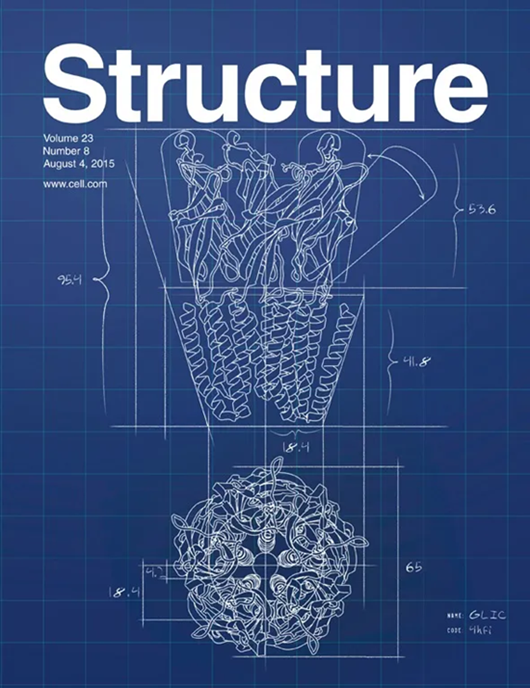高分辨率冷冻电镜分析可视化水合型I和IV型菌毛结构从肠毒素大肠杆菌
IF 4.3
2区 生物学
Q2 BIOCHEMISTRY & MOLECULAR BIOLOGY
引用次数: 0
摘要
致病细菌利用各种柔毛丝在肠道上皮细胞内定植,其中包括由伴侣-usher 或 IV 型柔毛丝组装途径合成的柔毛丝。尽管这些丝状物作为潜在的药物和疫苗靶点非常重要,但其巨大的尺寸和动态特性使得高分辨率结构测定具有挑战性。在这里,我们利用低温电子显微镜(cryo-EM)和全基因组测序确定了肠毒性大肠杆菌表达的 I 型和 IV 型纤毛虫的结构。I 型和 IV 型纤毛虫的低温电子显微镜分辨率分别为 2.2 Å 和 1.8 Å,清晰的低温电子显微镜图有助于对这些丝状物进行全新的结构建模,详细揭示侧链结构。我们解析了丝状物内核周围和内部的数千个水合水分子,它们稳定了原本不稳定的四元亚基组装。高分辨率结构为亚基与亚基之间的相互作用提供了新的见解,并为了解柔毛的组装、稳定性和灵活性提供了重要线索。本文章由计算机程序翻译,如有差异,请以英文原文为准。

High-resolution cryo-EM analysis visualizes hydrated type I and IV pilus structures from enterotoxigenic Escherichia coli
Pathogenic bacteria utilize a variety of pilus filaments to colonize intestinal epithelia, including those synthesized by the chaperone-usher or type IV pilus assembly pathway. Despite the importance of these filaments as potential drug and vaccine targets, their large size and dynamic nature make high-resolution structure determination challenging. Here, we used cryo-electron microscopy (cryo-EM) and whole-genome sequencing to determine the structures of type I and IV pili expressed in enterotoxigenic Escherichia coli. Well-defined cryo-EM maps at resolutions of 2.2 and 1.8 Å for type I and IV pilus, respectively, facilitated the de novo structural modeling for these filaments, revealing side-chain structures in detail. We resolved thousands of hydrated water molecules around and within the inner core of the filaments, which stabilize the otherwise metastable quaternary subunit assembly. The high-resolution structures offer novel insights into subunit-subunit interactions, and provide important clues to understand pilus assembly, stability, and flexibility.
求助全文
通过发布文献求助,成功后即可免费获取论文全文。
去求助
来源期刊

Structure
生物-生化与分子生物学
CiteScore
8.90
自引率
1.80%
发文量
155
审稿时长
3-8 weeks
期刊介绍:
Structure aims to publish papers of exceptional interest in the field of structural biology. The journal strives to be essential reading for structural biologists, as well as biologists and biochemists that are interested in macromolecular structure and function. Structure strongly encourages the submission of manuscripts that present structural and molecular insights into biological function and mechanism. Other reports that address fundamental questions in structural biology, such as structure-based examinations of protein evolution, folding, and/or design, will also be considered. We will consider the application of any method, experimental or computational, at high or low resolution, to conduct structural investigations, as long as the method is appropriate for the biological, functional, and mechanistic question(s) being addressed. Likewise, reports describing single-molecule analysis of biological mechanisms are welcome.
In general, the editors encourage submission of experimental structural studies that are enriched by an analysis of structure-activity relationships and will not consider studies that solely report structural information unless the structure or analysis is of exceptional and broad interest. Studies reporting only homology models, de novo models, or molecular dynamics simulations are also discouraged unless the models are informed by or validated by novel experimental data; rationalization of a large body of existing experimental evidence and making testable predictions based on a model or simulation is often not considered sufficient.
 求助内容:
求助内容: 应助结果提醒方式:
应助结果提醒方式:


